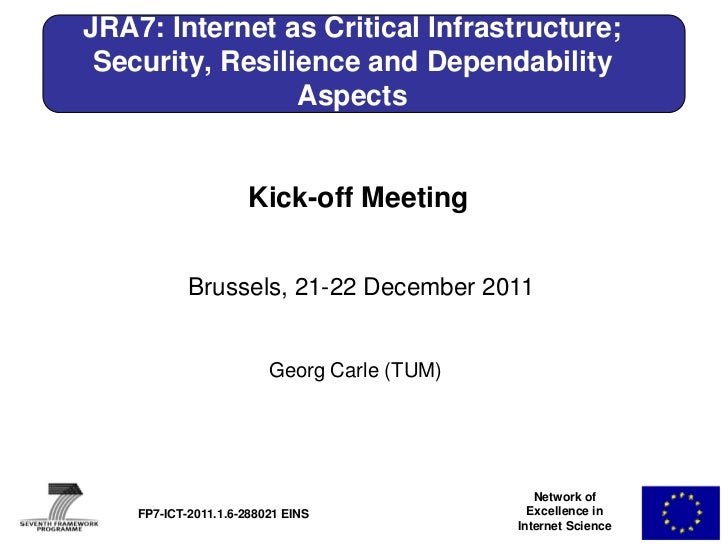Critical Role of CDNs in Internet Infrastructure Resilience

Content Delivery Networks (CDNs) play a pivotal role in ensuring the resilience and performance of the internet infrastructure. They serve as a backbone for the delivery of content, optimizing the speed and reliability of online experiences.
Benefits of CDNs for Internet Infrastructure Resilience:

1. Content Caching:
- CDNs store copies of frequently requested content across multiple servers globally.
- This allows content to be delivered from the server closest to the user, reducing latency and improving response time.
2. Load Balancing:
- CDNs distribute user traffic across multiple servers, preventing any single server from being overloaded.
- This ensures that content is accessible even during peak traffic periods.
3. Failover Mechanisms:
- CDNs implement failover mechanisms to reroute traffic to backup servers if a primary server fails.
- This ensures that content continues to be delivered even in the event of outages or failures.
4. DDoS Mitigation:
- CDNs can mitigate the impact of Distributed Denial of Service (DDoS) attacks by absorbing and dispersing attack traffic.
- This protects websites and applications from being disrupted by malicious attempts to overload them.
5. Network Congestion Management:
- CDNs can identify and mitigate network congestion issues by routing traffic through less congested paths.
- This ensures that content is delivered smoothly and consistently.
6. Improved Scalability:
- CDNs allow websites and applications to scale their content delivery rapidly without investing in additional infrastructure.
- This facilitates the growth of online services and enables them to handle increasing traffic demands.
7. Enhanced Security:
- CDNs can implement security measures such as encryption and malware detection to protect content and user data.
- This helps prevent data breaches and cyber attacks.
Conclusion:
CDNs are essential components of the internet infrastructure, providing crucial resilience and performance enhancements. By caching content, balancing load, implementing failover mechanisms, and mitigating DDoS attacks, CDNs ensure that online content is delivered reliably, swiftly, and securely, even in the face of challenges. Their role is critical for the smooth functioning of the internet and the seamless experience of users worldwide.## The Critical Role Of Cdns In Internet Infrastructure Resilience
Executive Summary
Content Delivery Networks (CDNs) play a pivotal role in strengthening the resilience of internet infrastructure by optimizing content delivery, enhancing network efficiency, and mitigating risks associated with potential disruptions. Through their geographically distributed servers and advanced caching mechanisms, CDNs ensure seamless user experiences, reduce latency, and provide reliable access to digital content even during periods of increased demand or network congestion.
Introduction
The internet has become an indispensable part of modern society, underpinning critical services such as communication, commerce, and information sharing. As the volume and complexity of internet traffic continue to surge, the need for robust and resilient infrastructure has become paramount. Content Delivery Networks (CDNs) have emerged as a key technology for ensuring the reliability, performance, and security of the internet.
FAQs
Q: What is a CDN?
A: A CDN is a geographically distributed network of servers that stores and delivers content to users based on their location, reducing latency and improving user experience.
Q: How do CDNs improve internet resilience?
A: CDNs provide redundancy and load balancing, ensuring that content is available even during periods of high demand or network outages. They also employ caching mechanisms to reduce server load and improve performance.
Q: What are the benefits of using a CDN?
A: CDNs offer several benefits, including reduced latency, increased bandwidth, enhanced security, improved scalability, and cost optimization.
Subtopics
1. Content Caching and Distribution
- Edge Servers: Distributed across multiple locations, edge servers cache popular content closer to users, reducing latency and improving load times.
- Caching Strategies: CDNs employ various caching strategies, such as browser caching and reverse proxies, to store and deliver content efficiently.
- Content Compression: CDNs compress content to reduce file size, minimizing bandwidth usage and improving delivery speed.
2. Load Balancing and Redundancy
- Traffic Management: CDNs monitor traffic patterns and distribute requests across multiple servers to prevent overloading and ensure optimal performance.
- Redundancy: By replicating content across multiple data centers, CDNs provide redundancy, ensuring that content remains accessible even during outages.
- Failover Mechanisms: CDNs implement failover mechanisms to automatically switch to alternative servers in case of server failures or network disruptions.
3. Security and Mitigation
- DDoS Protection: CDNs provide protection against DDoS attacks by absorbing and mitigating malicious traffic, safeguarding websites and services.
- Content Filtering: CDNs filter malicious or inappropriate content, protecting users from potential threats and ensuring compliance with regulations.
- SSL/TLS Support: CDNs support SSL/TLS encryption, providing secure connections and protecting data in transit.
4. Scalability and Flexibility
- Elastic Scaling: CDNs can automatically scale their infrastructure to meet fluctuating demand, ensuring consistent performance and reliability.
- Global Reach: CDNs have a global presence, enabling content delivery across multiple regions and countries.
- Flexible Configuration: CDNs offer customizable configurations, allowing businesses to tailor their services to specific requirements.
5. Performance Optimization
- Network Optimization: CDNs optimize network routing and traffic management to minimize latency and improve delivery speed.
- Content Prefetching: CDNs predict and prefetch content that is likely to be requested, reducing load times and enhancing user experience.
- Real-Time Analytics: CDNs provide real-time analytics, enabling businesses to monitor performance, identify bottlenecks, and optimize their delivery strategies.
Conclusion
Content Delivery Networks (CDNs) play a crucial role in enhancing the resilience of internet infrastructure by optimizing content delivery, providing redundancy, and mitigating security risks. Their geographically distributed servers, advanced caching mechanisms, and robust security measures ensure that digital content is accessible, reliable, and secure even during periods of high demand or network disruptions. As the internet continues to grow and evolve, CDNs will remain essential for maintaining the performance, reliability, and security of the internet ecosystem.
Keyword Tags
- Content Delivery Networks (CDNs)
- Internet Infrastructure Resilience
- Content Caching
- Load Balancing
- Security and Mitigation
